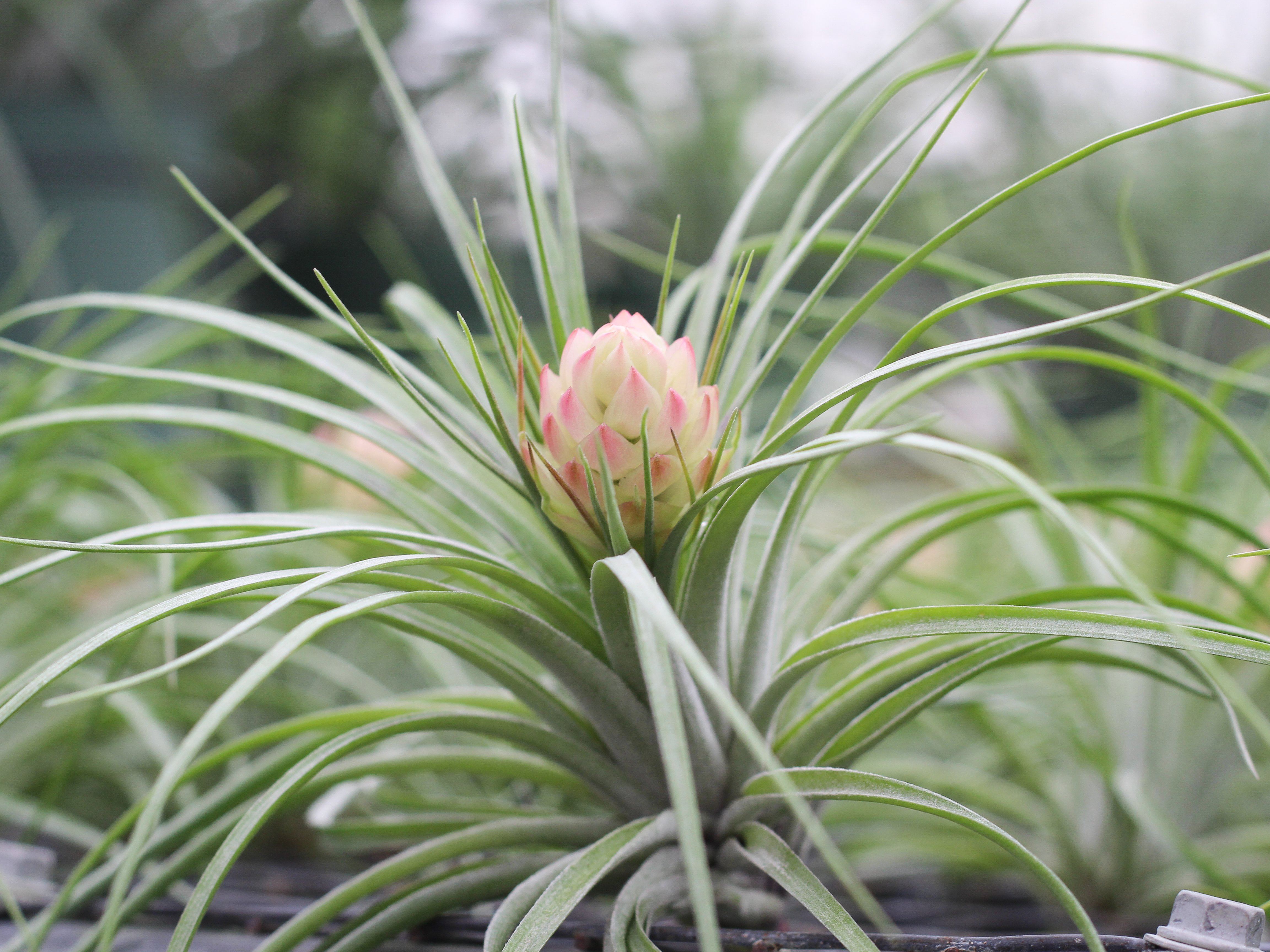Embark on a captivating journey into the world of air plants that bloom, where these remarkable epiphytes showcase their exquisite floral displays. Air plants, also known as Tillandsia, possess unique characteristics that set them apart from other plant species, making them a fascinating subject for plant enthusiasts and nature lovers alike.
With their ability to thrive without soil, air plants have adapted to various environments, offering a diverse range of species with distinctive blooming capabilities. Understanding the factors that contribute to successful blooming, such as light, humidity, and nutrient availability, is crucial for cultivating these enchanting plants.
Characteristics of Air Plants that Bloom

Air plants, also known as tillandsias, are unique epiphytic plants that possess exceptional characteristics that set them apart from other plant species. Unlike traditional plants that rely on soil for sustenance, air plants absorb moisture and nutrients from the air through specialized trichomes on their leaves.
Common Air Plant Varieties Known for Blooming
Among the diverse species of air plants, certain varieties are renowned for their captivating blooms. These include:
- Tillandsia cyanea: This species produces vibrant purple flowers that bloom profusely, creating a captivating display.
- Tillandsia ionantha: Known for its prolific blooming, this air plant exhibits clusters of pink or purple flowers that emerge from the center of the rosette.
- Tillandsia usneoides: Commonly known as Spanish moss, this air plant features delicate, thread-like leaves and produces small, greenish-white flowers.
Factors Contributing to Successful Blooming
To encourage successful blooming in air plants, several factors play a crucial role:
- Light: Air plants require bright, indirect light to thrive. Insufficient light can hinder blooming.
- Humidity: These plants prefer high humidity levels. Misting them regularly or placing them in humid environments can promote blooming.
- Nutrient Availability: Air plants benefit from occasional fertilization with a balanced liquid fertilizer specifically designed for epiphytes.
Types of Air Plant Blooms

Air plants, also known as Tillandsia, are renowned for their unique ability to thrive without soil. While not all air plants produce blooms, those that do offer a captivating display of colors, shapes, and sizes.
Bloom Shapes and Colors
Air plant blooms exhibit a diverse array of shapes, including star-shaped, tubular, and bell-shaped flowers. The colors range from vibrant shades of red, orange, and yellow to delicate hues of pink, lavender, and white. Some species, like Tillandsia cyanea, even display a striking blue inflorescence.
Bloom Seasons, Air plants that bloom
The blooming season for air plants varies depending on the species. Some, like Tillandsia ionantha, bloom year-round, while others, such as Tillandsia bulbosa, flower only once a year. To determine the blooming season of a particular air plant, observe its growth pattern and environmental conditions.
Unusual and Attractive Blooms
Certain air plant species boast extraordinary blooms that set them apart from the rest. Tillandsia xerographica, known as the “king of air plants,” produces a towering, cone-shaped inflorescence that can reach up to 12 inches in height. Tillandsia usneoides, the “Spanish moss,” forms long, trailing strands of silvery-green leaves that produce delicate white flowers.
Care for Air Plants in Bloom: Air Plants That Bloom
To ensure the continued health and beauty of air plants during their blooming period, specific care considerations are essential. Providing optimal conditions for light, humidity, and nutrient levels is crucial for supporting healthy blooms and preventing issues that may hinder their growth.
Light
Air plants in bloom require ample bright, indirect light to sustain their blooms. Place them near a window with access to filtered sunlight for several hours daily. Avoid direct sunlight, as this can scorch the leaves and damage the blooms.
Humidity
Maintaining high humidity levels is vital for air plants, especially during their blooming period. Mist the plants regularly with water or place them in a humid environment, such as a bathroom or kitchen. Alternatively, use a humidifier to increase the overall humidity in the room.
Nutrients
Fertilize air plants in bloom every two to three weeks with a diluted, balanced liquid fertilizer. Avoid over-fertilizing, as this can harm the plant. Use a fertilizer specifically designed for air plants or dilute a regular houseplant fertilizer to half strength.
Troubleshooting
If your air plant is not blooming or its blooms are unhealthy, consider the following factors:
- Lack of sunlight: Ensure the plant is receiving adequate bright, indirect light for several hours daily.
- Insufficient water: Check if the plant is receiving enough water by misting or soaking it regularly. Avoid overwatering, as this can lead to root rot.
- Nutrient deficiency: Fertilize the plant regularly with a diluted liquid fertilizer to provide essential nutrients.